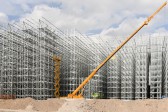I have just recently received an arbitral award for a client that resolved a construction dispute which had arisen more than five years ago. Unfortunately, such time frame is not exceptional. Litigation would probably not have lasted any shorter. Construction disputes are usually complex and tend to involve stacks of documents. Such disputes often involve multiple contracts and multiple parties, such as subcontractors or suppliers. Industry insiders know that a dispute related to a small part of the works can lead to serious and far-reaching consequences unless a solution is found quickly and effectively. Undoubtedly, mediation and some other ADR, including firstly Dispute Boards, make it possible to resolve construction disputes ‘in real time’. Potential savings are abundant.

According to Dr. Cyril Chern, member of the Advisory Panel of the Dispute Board Federation, “the statistics show that if there is an operational Dispute Board in existence on a project close to 99% of all disputes referred to it will be successfully resolved within less than 90 days and at a cost of about 2% of the amount of the dispute” (C. Chern, The Dispute Board Federation and the Role of Dispute Boards in Construction – Benefits without Burden, Revista del Club Español del Arbitraje, Volume 2010, Issue 9, p. 5). Even though the methodology behind these statistics is not entirely clear, indeed, the costs may be much lower than in case of arbitration or litigation.
The concept of using a standing panel of impartial experts to provide non-binding recommendations for resolving disputes first developed in the 1970s and 1980s in the US. Such boards were used on various construction projects, including the Eisenhower Tunnel (Colorado), the Mount Baker Ridge Highway Tunnel (Seattle, Washington), and the Chambers Creek Tunnel (Tacoma, Washington).
Soon thereafter, Dispute Boards began operating internationally. In 1995 FIDIC first introduced the concept of a dispute board into its contracts in its conditions of contract for design-built and turnkey projects (the ‘Orange Book’). In the very same year, the World Bank made DRBs mandatory for all IBRD-financed projects over US$50m. In 1997 the Asian Development Bank and EBRD followed with similar decisions. In 2000 the AAA published its Dispute Review Board Guide Specifications, and the ICC followed with a set of Dispute Board Clauses, DB Rules and a Model Dispute Member Agreement in 2004 (for their overview and comparison see e.g. Jane Jenkins and James Stebbings, International Construction Arbitration Law, Kluwer Law International 2006, Chapter 3: Dispute Avoidance and Resolution, pp. 55-92).
Today there are many examples of Dispute Boards’ effective use in international construction projects, including:
– the El Cajon Hydroelectric Project (Honduras, 1981), often cited as the first large international construction contract where a Dispute Board was effectively utilized;
– the Hong Kong Airport Project (six members of a standing Dispute Review Group, came from various areas of expertise expected to be relevant to disputes that might have arisen on the project. Depending on the nature and complexity of a particular dispute, one or three members of the Group would be selected to decide a dispute);
– the Ertan Project, the hydroelectric power plant involving a dam, tunnels and underground power house complex, in Sichuan Province, China; and
– the Channel Tunnel Rail Link Project in the United Kingdom.
See more examples e.g. in Peter Chapman’s or Jenkins& Stebbings’ publications.
Dispute Boards are known under different names as: Dispute Review Boards (DRB), Dispute Adjudication Boards (DAB) or Combined Dispute Boards (CDB). They differ also in respect of the legal status of the outcome of the proceedings, which may amount to a ‘recommendation’ or a (non-)binding and (non-)final decision. The use of Dispute Boards never closes the door to court or arbitral proceedings. While in some instances they appear more akin to mediation, in other they are more adjudicative in their nature. Such variety and flexibility are the beauty of ADR.
Dispute Boards are often described as the techniques of ‘disputes avoidance’ rather than resolution. Avoiding disputes by identifying, investigating and discussing problems at an early stage helps to see the contract work delivered on time and within budget. Solving potentially disastrous problems ‘in real time’ can be invaluable.
________________________
To make sure you do not miss out on regular updates from the Kluwer Mediation Blog, please subscribe here.


